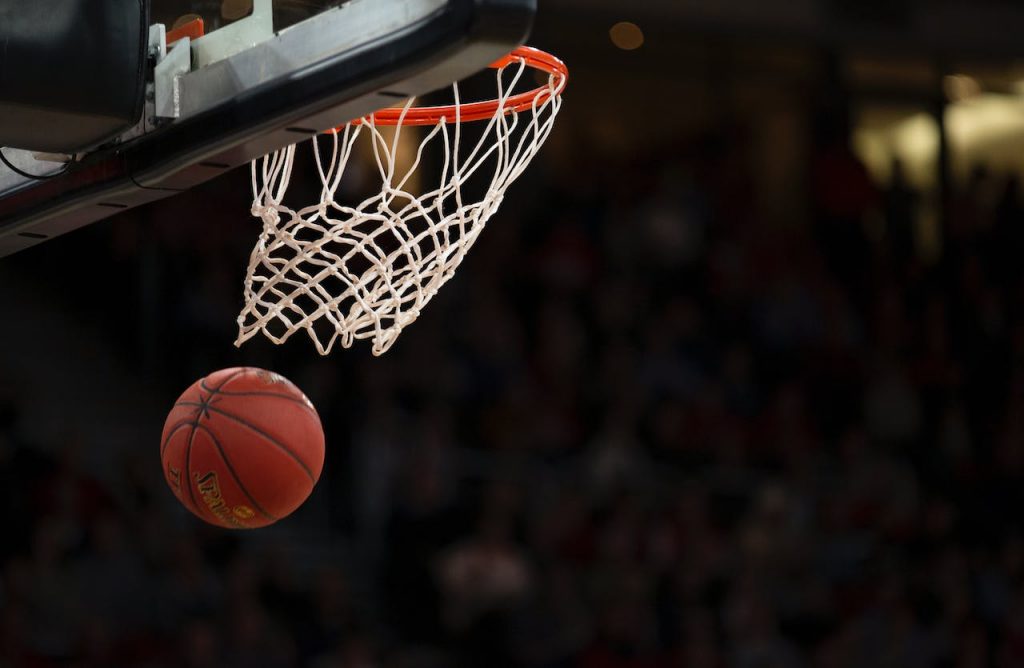Basketball is one of the most famous sports in the world, especially in the U.S. An NBA-like basketball association is estimated to have an annual revenue of around $10 billion. Additionally, it has about a million regular-season viewers, making it one of the leading leagues worldwide.
Basketball is a fast-paced and exciting sport that has captured the hearts of fans worldwide. Its origins can be traced back to 1891, when Dr. James Naismith invented the game to keep his students active during winter at the International YMCA Training School in Springfield, Massachusetts. Since then, the sport has evolved into a global phenomenon, with professional leagues in almost every country.
The rules of basketball are relatively simple. In basketball, two teams of five players each strive to earn points by successfully shooting a ball through a hoop positioned 10 feet above the ground. The team with the most points at the end of four quarters- each lasting 12 minutes- wins. But that’s not including timeouts, fouls, and other game interruptions that can make the duration of a basketball game stretch up to two and a half hours. Here’s a deep look into how long basketball games are, the elements that contribute to the length of a game, and how they affect the overall viewing experience.
I. How Long is a Basketball Game?
As stated, basketball games finish after four quarters, each lasting 12 minutes. However, this can change depending on the league, level of play, and specific regulations in different countries. For instance, international basketball games have 10-minute quarters instead of 12 minutes. The number of interruptions in the game can also increase its length. Here’s a look into each league, the average amount of time played in each league, and reasons why.
A. National Basketball Association (NBA)
In the National Basketball Association (NBA), arguably the most prestigious basketball league in the world, games are longer due to the higher number of interruptions and timeouts. NBA games have four quarters, each lasting 12 minutes, the highest standard in any league.
However, with halftime, team timeouts, media timeouts, free throws, out-of-bounds stops, and fouls, an NBA game lasts approximately 2-2.5 hours. These interruptions are integral to the game as they allow teams to strategize their next moves and also allow for commercial breaks, which are crucial for broadcasting networks.
B. Women’s National Basketball Association (WNBA)
The Women’s National Basketball Association (WNBA), the premier professional basketball league in the United States, follows a structure similar to that of the NBA. The WNBA games are divided into four 10-minute quarters, making it a 40-minute game in actual play. Despite this reduction in playing time compared to the NBA, the total time for a WNBA game can also extend to approximately 2 hours. This duration includes halftime, team timeouts, media timeouts, free throws, and fouls. These breaks are crucial to the game, allowing teams to discuss strategies and providing necessary rest periods for the players. Like the NBA, these interruptions also offer opportunities for commercial breaks, a significant component of the broadcasting business model.
The Women’s National Basketball Association (WNBA) implements 10-minute quarters instead of the NBA’s 12-minute quarters as part of its game regulations. This distinction primarily stems from the influence of the International Basketball Federation (FIBA), which standardizes 10-minute quarters for male and female games worldwide.
C. National Collegiate Athletic Association (NCAA)
College is a breeding ground for future basketball stars, with the National Collegiate Athletic Association (NCAA) being the primary platform for young athletes to showcase their talent. The league can have ten million viewers during its peak times. The NCAA follows a different game structure from professional leagues, making it an exciting experience to watch and follow.
In college basketball games, teams play two halves of 20 minutes each, resulting in 40 minutes of actual playtime. However, a college basketball game can stretch to approximately 2 hours and 10 minutes with halftime, team timeouts, media timeouts, and fouls. This length is relatively shorter than professional leagues due to fewer interruptions, making for a more fast-paced and dynamic viewing experience. Additionally, since the league has lower sponsorships when compared to big professional leagues, there are fewer commercial breaks than an NBA or WNBA game, which means shorter times per game.
D. Youth Basketball Games
Youth basketball games, organized at the pre-high school level, tend to have different regulations to accommodate the young age of the players and foster skill development. These games typically consist of four quarters, each lasting 6 to 8 minutes, depending on the specific age group and league rules. Thus, the actual playtime is 24 to 32 minutes.
However, a youth basketball game can last approximately 1 to 1.5 hours with halftime, team timeouts, and fouls. This shorter span compared to professional leagues is designed to maintain the interest and energy levels of the young players while also accommodating their physical capabilities. The emphasis in youth basketball is more focused on player development and enjoyment than commercialization, so there are fewer media timeouts and commercial breaks. Despite the shorter game duration, the thrill and excitement of the game remain intact, making it an enjoyable experience for young players and spectators alike.
E. High School Basketball Games
High school basketball games are often the first opportunity for young athletes to showcase their skills in a competitive setting. The games follow different rules and timelines and typically comprise four 8-minute quarters, resulting in 32 minutes of actual playtime. However, a typical high school basketball game lasts approximately 1 to 1.5 hours, including halftime, team timeouts, and fouls.
This duration suits the academic environment, ensuring that games fit within school schedules and do not overly tire the student-athletes. Like youth basketball, high school games have fewer commercial breaks due to the limited presence of media coverage. Nonetheless, high school basketball games are packed with energy, competitiveness, and talent, providing an engaging viewing experience for local communities and talent scouts.
II. What Factors Affect The Length of Basketball Games?
A basketball game has rules that regulate its duration, but several chaotic factors can still affect the length of a game. Here are some of them:
A. Stoppages and Timeouts
One of the most significant factors that extend the length of a basketball game is stoppages and timeouts. A timeout is a halt in the game, called by a team or the referee, which allows the team to discuss strategies, make substitutions, or give the players a moment to rest. In the NBA, each team is allowed six full timeouts and two 20-second timeouts per game. Furthermore, referees can halt the game for various reasons, including reviewing a play or dealing with unsportsmanlike conduct. Each stoppage can add several minutes to the game’s total length, creating a discrepancy between actual play time and total game duration.
Fouls are the leading cause of stoppages in basketball games, with free throws and out-of-bounds stops adding to the game time. Since referees have to judge whether a foul has occurred, this can also lead to longer interruptions if it requires video review or deliberation among referees.
B. Commercial Breaks
Commercial breaks significantly contribute to the length of a basketball game, especially in professional leagues like the NBA and WNBA. Broadcasters use these breaks to air commercials, a major revenue source.
In the NBA, mandatory television timeouts at the first dead ball after 6:59 and 2:59 remain on the clock in both the first and third periods. Similar timeouts happen in the second and fourth periods. These timeouts last for 130 seconds each. Furthermore, each team is given seven timeouts that last 75 seconds each, adding to the total duration. In addition to these, there are also commercial breaks during halftime and any overtime periods. Although these commercial breaks might interrupt the game flow for at-home viewers, they are crucial for the financial sustainability of professional basketball leagues.
Lastly, one leading factor affecting the length of basketball games is overtime. It can inflate a basketball game and lead to some of the longest NBA games of all time, such as the 1951 Olympian-Royals game, which had six back-to-back overtime periods.
III. How Overtime Works in Basketball
Overtime in basketball is an additional period of play used to break a tie at the end of regulation time. It becomes necessary when the scores of both teams are equal when the buzzer sounds at the end of the fourth quarter. In this scenario, an extra period of play, known as overtime, is initiated to determine the contest winner.
A. Overtime Duration
The length of an overtime period varies depending on the league. In the NBA, WNBA, and NCAA, each overtime period lasts 5 minutes. Suppose the teams remain tied after the first overtime period. In that case, additional overtime periods are played, each lasting 5 minutes, until one team outscored the other at the end of an overtime period.
B. Overtime Rules
Overtime in basketball follows the same rules as the fourth quarter, with a few exceptions. For instance, teams in the NBA are allowed one additional timeout for each overtime period. In the NCAA, teams are permitted one timeout in each overtime period, irrespective of the number of timeouts remaining from the second half. The team that first possessed the ball in the game will also start with it in the first overtime period, and this alternates with each additional overtime.
C. Overtime Impact on Game Duration
As previously mentioned, including overtime can significantly extend the length of a basketball game. Each overtime period adds five more minutes of play and includes timeouts and, potentially, commercial breaks. Therefore, a game that goes into multiple overtime periods can considerably lengthen the total duration, enhancing the suspense and thrill of the contest for both players and spectators.
The length of a basketball game can vary significantly based on the league and level of play. From professional leagues like the NBA and WNBA to collegiate and high school competitions, the duration of basketball games is influenced by many factors. These include the game’s rules, the number of interruptions such as timeouts and fouls, commercial breaks, and overtime periods. Understanding these factors enhances the viewing experience and deepens appreciation for the strategic aspects of the game that happen off the court. Whether you are a player, coach, or passionate fan, capturing the nuances of game duration can deepen your understanding and love for basketball.
FAQs
Q1: How long can a basketball game be?
A basketball game’s length can vary significantly depending on the league, the number of interruptions like timeouts and fouls, commercial breaks, and potential overtime periods. On average, NBA games last approximately 2-3 hours, while WNBA and NCAA games can last about 2 hours. Youth and high school basketball games typically have a shorter duration, ranging from 1 to 1.5 hours. However, games that go into overtime, especially multiple overtime periods, can significantly extend the total duration.
Q2: How many minutes is a basketball game break?
The duration of a break in a basketball game depends on the type of break and the league in question. In the NBA and WNBA, halftime, which is the longest break, lasts 15 minutes. Team timeouts can last from 60 to 120 seconds, and mandatory TV timeouts last about 130 seconds.
In NCAA games, halftime lasts 15 minutes, and each team is allowed a limited number of 30-second and 60-second timeouts. The breaks for high school and youth games tend to be shorter to fit the games into shorter overall time slots.
Q3: What is the last 2-minute rule in the NBA?
The last 2-minute rule in the NBA refers to a set of special rules that occur in the final two minutes of each half in an NBA game and each overtime period. Some of these rules include resetting team foul counts, limiting the number of team timeouts, and implementing more stringent rules for flagrant fouls. The rule is enacted to ensure a smooth and fair conclusion of the game. One of the most notable aspects of this rule involves instant replay, where referees can review certain situations to ensure accuracy, such as determining possession after a ball goes out of bounds or assessing whether a shot was a 2-pointer or a 3-pointer.







